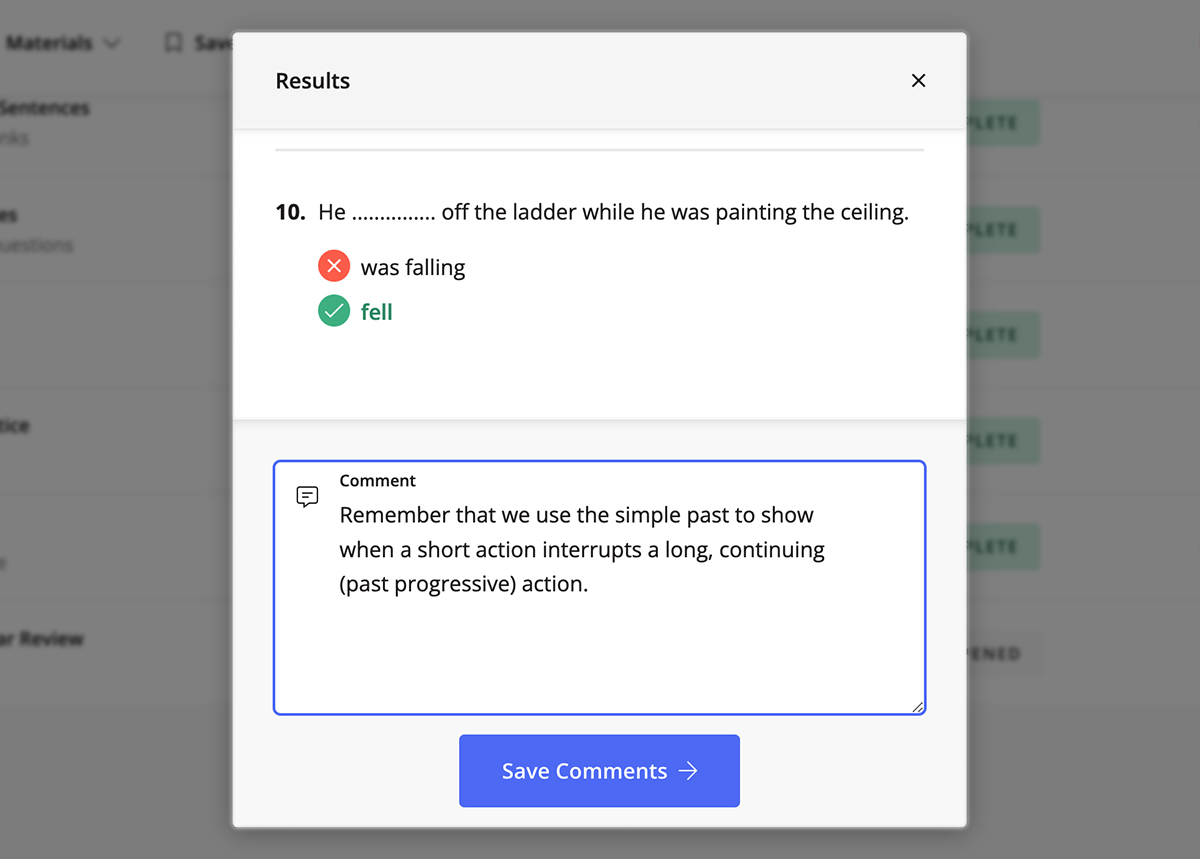Maximize the Benefits of Grammar Practice Worksheets with Warm-Up & Follow-Up Activities

June 6, 2022

Share this post
Did you know? Grammar Practice Worksheets (affectionately referred to as GPWs by our publishing team) are used by more teachers than any other lesson section on our site.
GPWs provide clear, thorough explanations of grammar targets. They also include a variety of writing tasks and group activities that give students confidence to put the structures into practice when they're producing the language on their own.
Our subscribers flock to this section no matter if they're teaching beginners or advanced learners, introducing or reviewing a grammar target.
Here are a few warm-up and follow-up activities for exploiting the grammar lessons from our Grammar Practice Worksheets section to ensure that your students come away with a full understanding of the target at hand.
Warm-up activities
These activities take place before you hand out the GPW.
The first two grammar activities appeal to students who have an inductive learning style. In other words, these students respond best when grammar is presented in context or naturalistically. This type of presentation is called implicit instruction, and the focus is on meaning.
The third grammar activity is geared toward students who learn best through explicit instruction with a focus on form.
Let's get started!
1. Present the target structure in context
Students will often discover patterns and use their analytical skills to understand grammar rules when they're introduced to a target structure in context.
It's not necessary to point out the structure to students as they read or listen. The goal is for students to make connections between the patterns and the meaning of the text, often on a subconscious level.
Try it out:
- For lower-level students, Ellii has two sections with readings that focus on a particular grammar structure and present it in context: Grammar Stories (Beginner – Intermediate) and True Grammar Stories (Beginner – Low Intermediate). Since these lessons also include an audio recording of the readings, you may choose to present the material aurally.
- For more advanced students, the authentic readings found in That's News to Me may be more appropriate. For example, the following paragraph from the lesson The Mysterious Cheese Theft provides exposure to the passive voice:
"But milk doesn't turn into cheese on its own. It has to be prepared, acidified, curdled, cut, pressed, and drained in a lengthy process that takes almost a whole day, van Dorp said. Next, it gets shaped into its signature round figure and put into a salt bath for one to two days. A week is then spent coating and drying it. Finally, the wheel is placed on a shelf to mature for at least three months, after which it's ready to go into the belly of a happy customer."
—"Thieves strike in the Netherlands with heist of $22,000—in cheese." April 14, 2022. © The Washington Post.
2. Ask a question that uses the target structure
When you ask a question that uses the target structure, students become aware of the language they need to answer it.
If you're preparing your students for a grammar lesson on the past progressive, you can ask, “What were you doing at 10:00 last night?”
Students may try to use the simple past tense in their answer but will recognize that their response does not match the question.
3. See what students already know
Most of our GPWs include a quiz at the end of the lesson.
Have students take the quiz before you begin the lesson. Their results can be used as a pacing guide.
If students do well on the quiz, you can approach the grammar lesson as a review. If they do poorly, you will need to spend extra time on the Notes section and going over the answers of each task.

Follow-up activities
Recycle the warm-up activities by using these follow-up activities to check and reinforce students' understanding of the target structure.
1. Have students review the text you used to present the structure in context
This time, have students circle all the instances where the structure is used. As an extra challenge, have them explain why it was used.
If you had students just listen to the text the first time, play the recording again and have students raise their hand each time they hear the grammar target.
2. Ask the same question
See if students can apply the target structure to their answer.
At this point, it's okay to correct students or to ask them to pause and answer the question again if they make mistakes using the grammar target.
3. Have students retake the quiz
Compare their scores to the quiz before they did the lesson and after. Seeing their scores improve will give students a real confidence boost!
Share your thoughts
What activities do you have your students do before and after they complete a Grammar Practice Worksheet? Please share your ideas in the comments below.
Comments (2)
Connie H.(Teacher)
July 23, 2022 at 4:40 pm

Ann Dickson(Author)
July 25, 2022 at 2:06 pm